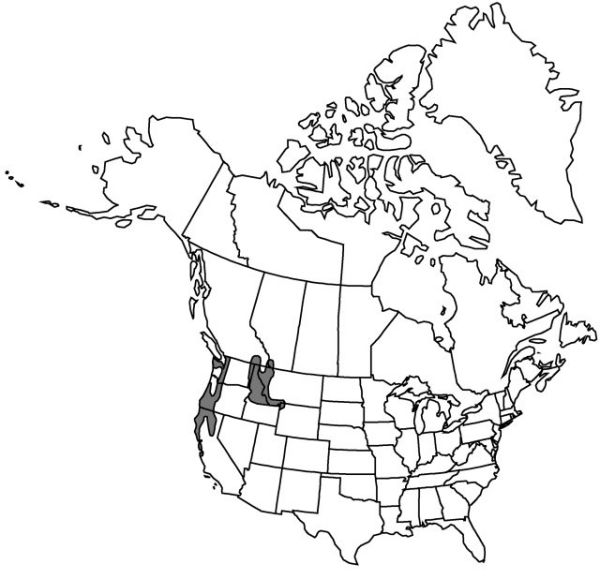
It may not come as a surprise to some people that "prairies" were once fairly common across the landscape of Ohio. Even the most casual visitor has likely seen hundreds of acres of Zea mays Prairie (a.k.a "corn fields") in the state.

More diligent observers recognize scraps and pieces (actually jewels) that escaped the plow and conversion to agriculture. The Ohio Prairie Association produced the map above showing the approximate historic locations of some of the largest prairies in the state (http://www.ohioprairie.org/).
Earlier this June, I ventured to central Ohio with plans to search out one of these, Daughmer Savanna, maybe 30 miles from my childhood home. However, too much time in the car over the last week made me hesitant to drive the extra miles it was going to take to get there. If it wasn't for the persistence of my mother I never would have made it...
Although I had been searching for prairie remnants off and on for several days in NW Ohio and SE Michigan, this one knocked my socks off! But I must admit it was the trees that really captured my interest; I barely noticed the ground flora. The trees were amazing. None of my pictures from that brief afternoon visit do them justice. They were astounding huge, gnarly, twisted old hulks several feet in diameter. Some appeared as wide as they were tall, and some had branches draping almost to the ground (reminiscent of ancient live oaks in the south).
There seemed to be something approaching 4 hulks/acre, but they were not evenly distributed, giving the impression of a natural pattern or, perhaps, intelligent design?. Many had broken tops and lightning scars. Who knows what travails these oaks have experienced in their obviously long lives?
 No midstory trees were trees were present giving the site much of its open structured appearance. However, a large number of saplings were establishing in the understory (the sitee is now protected from no grazing other than from an obviously abundant deer population). I had never really been around much Bur Oak (Quercus macrocarpa) before - what awesome trees! After "oohing and ahhing' for quite some time I was able to notice a few other plants. Yep, there were prairie grasses. Also glimpsed the uniquely midwestern Sullivant's Milkweed (Asclepias sullivantii). Large ants were swarming all over the flowers. Does anyone know what they may have been doing?
No midstory trees were trees were present giving the site much of its open structured appearance. However, a large number of saplings were establishing in the understory (the sitee is now protected from no grazing other than from an obviously abundant deer population). I had never really been around much Bur Oak (Quercus macrocarpa) before - what awesome trees! After "oohing and ahhing' for quite some time I was able to notice a few other plants. Yep, there were prairie grasses. Also glimpsed the uniquely midwestern Sullivant's Milkweed (Asclepias sullivantii). Large ants were swarming all over the flowers. Does anyone know what they may have been doing?  |
| Winged Lythrum (Lythrum alatum) didn't expect it in the open, wet prairie |
 |
| Canada Thistle (Cirsium arvense) apparently introduced to America hundreds of years ago |
Daughmer Savanna is located in Prairie Region #5 on the map above, also known as the "Sandusky Plains". I have read estimates of nearly 200,000 acres of prairie & savannas historically occurred in this region. To say a handful still remain may be an overstatement. The Daughmer Savanna is one of a meager few remnants, and barely exceeds 30 acres. On the aerial image below (from 2010) I have highlighted the tract in black, giving some idea of the current landscape. The individual Bur Oaks in the savanna stand out in dark green, even at this scale.
 I am impressed & heartened by Ohio's Department of Natural Resources decision to purchase this tract a few years ago. Let's hope they and other states continue to make such excellent decisions!
I am impressed & heartened by Ohio's Department of Natural Resources decision to purchase this tract a few years ago. Let's hope they and other states continue to make such excellent decisions!
As a volunteer working at the site said, "pilgimages to Daughmer offer hope and renewal". I couldn't agree more....
 I am impressed & heartened by Ohio's Department of Natural Resources decision to purchase this tract a few years ago. Let's hope they and other states continue to make such excellent decisions!
I am impressed & heartened by Ohio's Department of Natural Resources decision to purchase this tract a few years ago. Let's hope they and other states continue to make such excellent decisions!As a volunteer working at the site said, "pilgimages to Daughmer offer hope and renewal". I couldn't agree more....
THANKS MOM, for making me go!!






















































